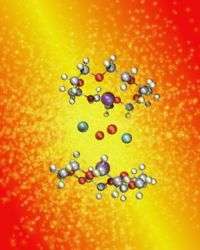Aromaticity may occur in unexpected materials

Shiv Khanna, Ph.D., professor of physics, and colleagues from Virginia Commonwealth University and Penn State, were recently highlighted in the Editor’s Choice section of the journal Science, as well as the trade publication Chemical & Engineering News, for the group’s work on the synthesis of an unusual inorganic ring molecule made of arsenic and tellurium, As2Te2-2, found to have magnetic and aromatic characteristics.
The findings suggest that traditionally nonmagnetic elements can become magnetic. For physicists, this work extends the understanding of aromaticity and shows that it may occur in unexpected materials.
Magnetic materials are used in a variety of applications, including magnetic stickers, motors, credit cards, refrigerators, magnetic memory storage and sensors.
“In this particular case, the interesting aspect is that both the elements are traditionally semiconducting elements that are nonmagnetic. We also expect the solid to be semiconducting which is quite exciting because of the recent interest in semiconducting magnets for quantum computing and spintronics,” said Khanna.
According to Khanna, aromaticity and magnetism are generally thought to be mutually exclusive; aromatic molecules are unusually stable and nonmagnetic. The new molecule, As2Te2-2, is ferromagnetic, suggesting a source of magnetism that is “new and unknown.” This also shows that assembling materials with nonmagnetic components may result in magnetic assemblies, suggesting that cluster assembled materials may have unusual properties.
In the mid-19th century, the term aromaticity was used to describe organic substances that had pleasant smell, Khanna said. It was later used as a marker for unusual stability of organic molecules and is linked to the delocalized rings of charge that form above and below the stable molecular rings and sometimes within the molecule itself.
Khanna said that the aromatic molecule synthesized by the team is unusually electron-rich. When one electron partially disrupts each ring, this leads to a magnetic moment, a distortion toward a parallelogram structure and an only partial disruption of the charged rings.
These findings were published in the January 2008 issue of the Journal of the American Chemical Society. Khanna collaborated with VCU researchers Arthur C. Reber and Meichun Qian and Penn State researchers Angel Ugrinov and Ayusman Sen.
Source: Virginia Commonwealth University





















